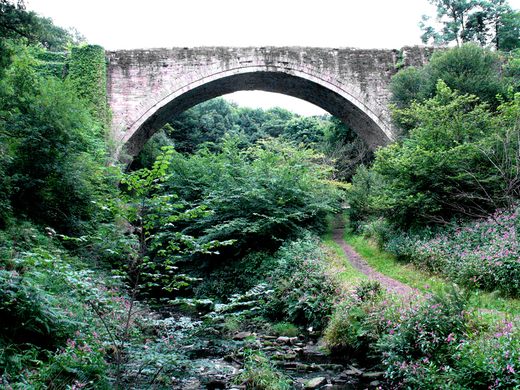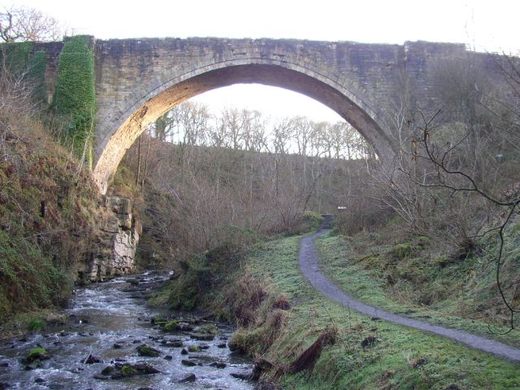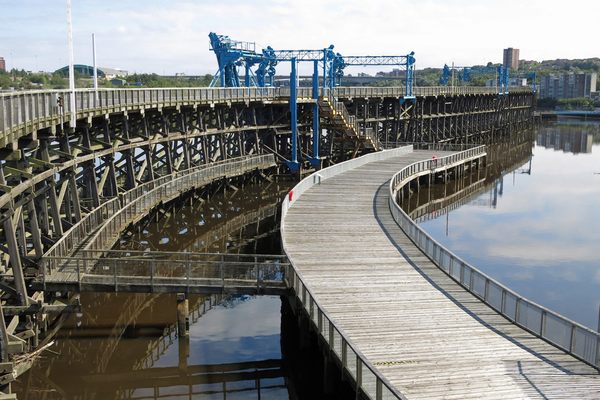AO Edited
Causey Arch
The world’s oldest surviving single-arch railway bridge.
Considered the first railway bridge in the world, the Causey Arch and the Tanfield Railway is an important part of England’s industrial past.
By the 1720s, coal mining in northeast England had spread inland, and coal from the collieries had to be transported to keelboats and colliers on the River Tyne. A network of horse-drawn railways called wagonways were designed to link collieries with the main wagonway on the River Tyne. The Tanfield Railway route from Tanfield Colliery in County Durham is thought to be the world’s oldest working railway.
The route to the River Tyne involved crossing a wooded ravine above the Causey Burn. In 1726, a vaulted stone arch was built, at the time, it was the longest single-span bridge in the country.
A local stonemason, Ralph Wood, designed and constructed the bridge. It’s reported that he was not confident in the bridge’s design. He was fearful that this stone arch would not last and took his own life at the bridge. However, the bridge has stood intact for nearly 300 years and is the oldest surviving single-arch railway bridge in the world. There is a sundial on one of the piers that includes the inscription “Ra. Wood, mason, 1727.”
The bridge stands high above a wooded gorge with the Causey Burn flowing beneath. The arch spans over 103 feet and stands 80 feet tall. It reportedly cost £12,000 to construct in 1726.
During the first years of its use, over 900 horse-drawn wagons crossed the arch each day. Two tracks crossed the arch, taking coal to the River Tyne and returning the empty wagons. Each wagon carried more than two tons of coal. There is a replica wagon located near the east end of the bridge. They were pulled by a single horse and the wagonway was designed to be level or downhill to the coal staithes piers on the river. This way, the horses would only have to pull the empty wagons back uphill.
The Causey Arch was listed as Grade I in 1950, and restoration work was carried out on the bridge in the 1980s. It’s now a pedestrian footbridge that links various walking paths. If you stand underneath the archway, the acoustics sound as though water is running above your head.
Know Before You Go
Free parking is available at the Causey Arch Picnic Area, signposted from the main road.
Follow the path from the car park. Watch out for steep unfenced drops. The path divides at a set of steps, continuing upward to the top of the arch and viewpoint, or down to a woodland walk along Causey Burn through the base of the arch.
There is a handy set of steps next to the arch that let you examine it from above and below.
Step-free access from the car park is signposted, but the viewpoint is overgrown.
Vintage steam train rides are available along the nearby Tanfield Railway.
















Follow us on Twitter to get the latest on the world's hidden wonders.
Like us on Facebook to get the latest on the world's hidden wonders.
Follow us on Twitter Like us on Facebook